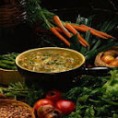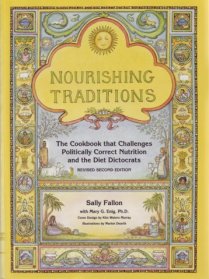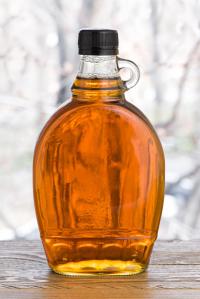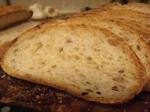By Jovanka Ciares, MindBodyGreen
When I first started my own business, I spent months living on a very strict budget. Yet, as a nutrition consultant and wellness coach, it was important for me to lead by example, which included consuming organic produce, whole grains, and supplements and following fitness routines that included yoga and dance. So I had to get creative and develop a few simple strategies for eating healthy and organic foods while staying on budget. Here’s what I learned.
1. Eat smaller portions.
It may seem funny at first, but it is actually quite practical. If you eat less, you’ll spend less. Besides the financial benefits of eating smaller portions, it can also help you improve digestion, reduce bloating, and trim your waistline. You don’t have starve yourself, but just reducing your portion size by as little a third will go a long way toward reducing your grocery bill, too. Try using smaller plates; it will fool your eye into believing you have more food. Also, waiting five to 10 minutes before getting a second helping will help trigger neurotransmitters that tell your brain you’ve had enough to eat.
2. Eliminate processed foods.
Packaged and processed foods may seem inexpensive at first, but the lack of nutrients in these foods will cause your body to continue to crave the nourishment it needs. It is a never-ending loop that will lead to a higher expense in the end (not to mention a slew of health issues in the future). Cut out processed foods and spend the extra money buying highly nutritious, fresh foods.
3. Cook at home.
Today, people in the Western world eat more than 50 percent of their meals outside the home. It’s convenient, yes, but it contributes to the obesity epidemic (the average portion size is much bigger in restaurants), and it can be really problematic when trying to stick to a limited budget. When you take the time to cook your meals at home, you tend to make and eat less food. By using organic ingredients and healthy recipes, you can create meals that are both tasty and healthy. It will also give you a chance to learn about the foods, spices, and condiments you cook with. For me, spending time in the kitchen has been the easiest and most effective way to learn to love and savor dozens of ingredients.
4. Eat more raw foods.
Although fresh, organic vegetables can come with a steep price tag, eating more of them can actually save you money down the road. Because you get more of the vitamins, minerals, probiotics, phytonutrients, etc. from raw veggies than from canned, frozen, or cooked ones, you can actually eliminate the need for supplements. You can also give your immune system a boost that will keep you out of the doctor’s office.
5. Shop at the farmers market.
If you have the option to buy your fruits and vegetables at a farmers market, do it. Because they’re the source of the food and are local, they don’t have to add transportation expenses or store markups. Most of what you find at the farmers market will be in season and organic, so you’ll be spending less, helping the local economy, and protecting the environment.
6. Buy whole grains in bulk.
Whole grains and legumes are cheap and are packed with protein, fiber, and other nutrients, all of which can help you feel fuller longer. Try buying your grains, beans, seeds, and nuts in bulk. Wholesale markets and grocery stores will often have a bulk section in the back where you can scoop as much as you want and pay per pound. You’ll find that by skipping the packaging, the grains will be a lot cheaper. These kinds of foods will also stay edible for a long time, so if you hit a great sale, don’t be afraid to stock your pantry.
7. Skip unnecessary treats.
Although it never hurts to indulge now and then, you might want to find some healthier and less expensive substitutes for your usual snacks. Most of the treats we crave are high in refined sugar, fat, or salt and come with a lot of preservatives and packaging. Instead of buying cookies and other packaged goodies, try learning to bake your own healthy versions using whole ingredients. There are also plenty of treats that use sugar substitutes, are gluten-free, and come from organic bakeries. A sweet piece of fruit can often satisfy a sudden sweet tooth, and some toasted nuts can satiate your appetite for salt.
This article was written by Jovanka Ciares and published in MindBodyGreen on March 27, 2013. Photo by Arina Habich/Flickr.










